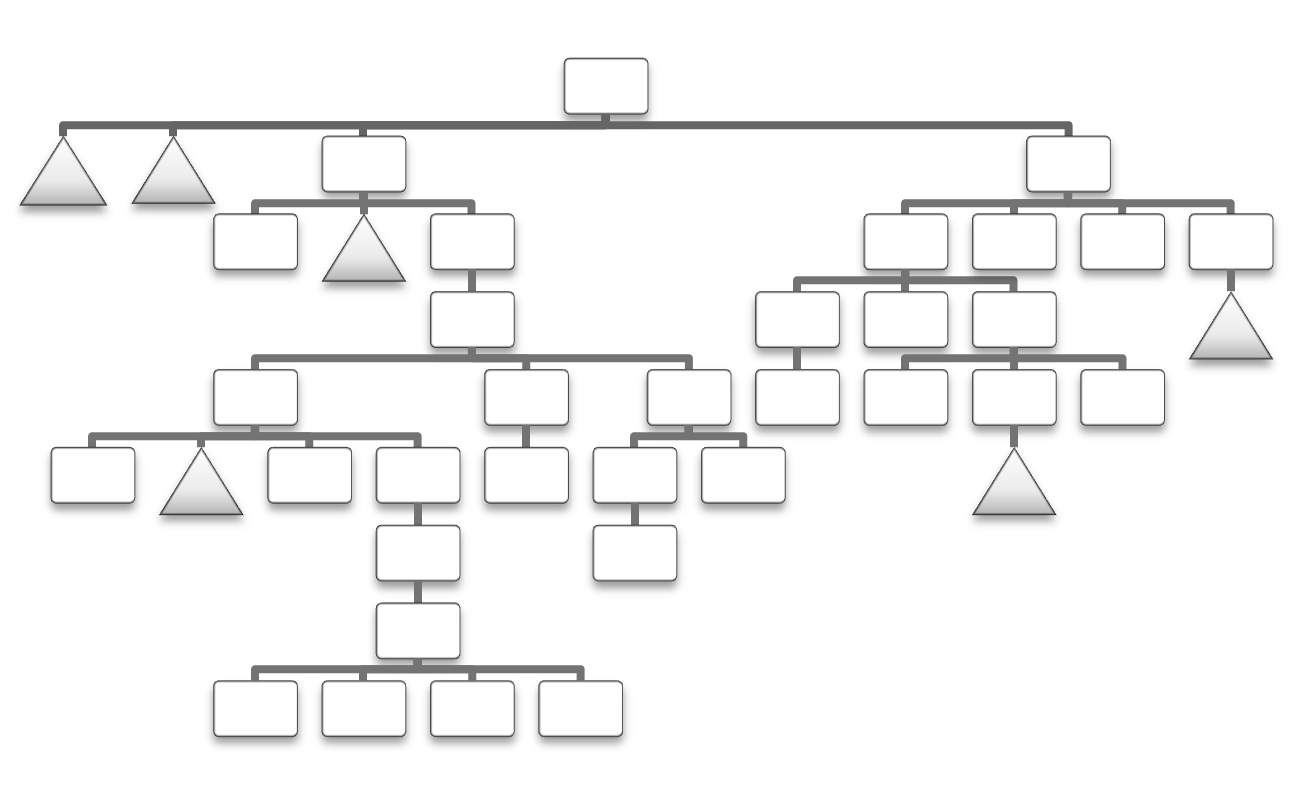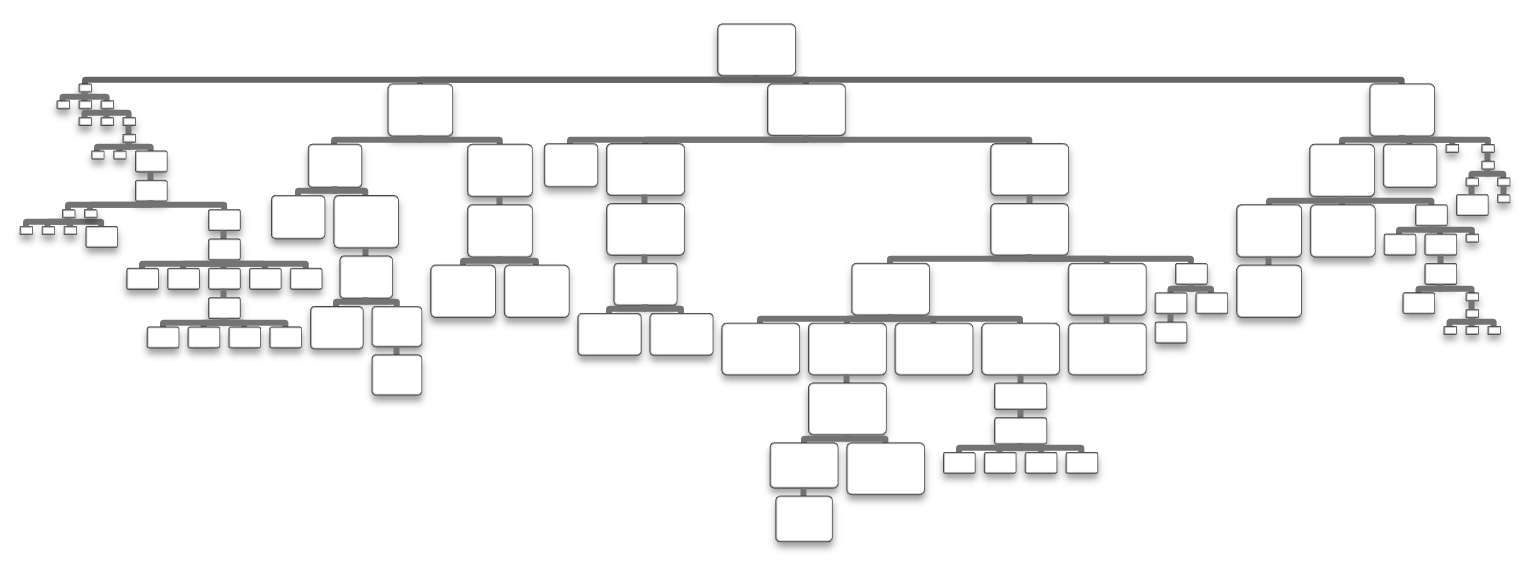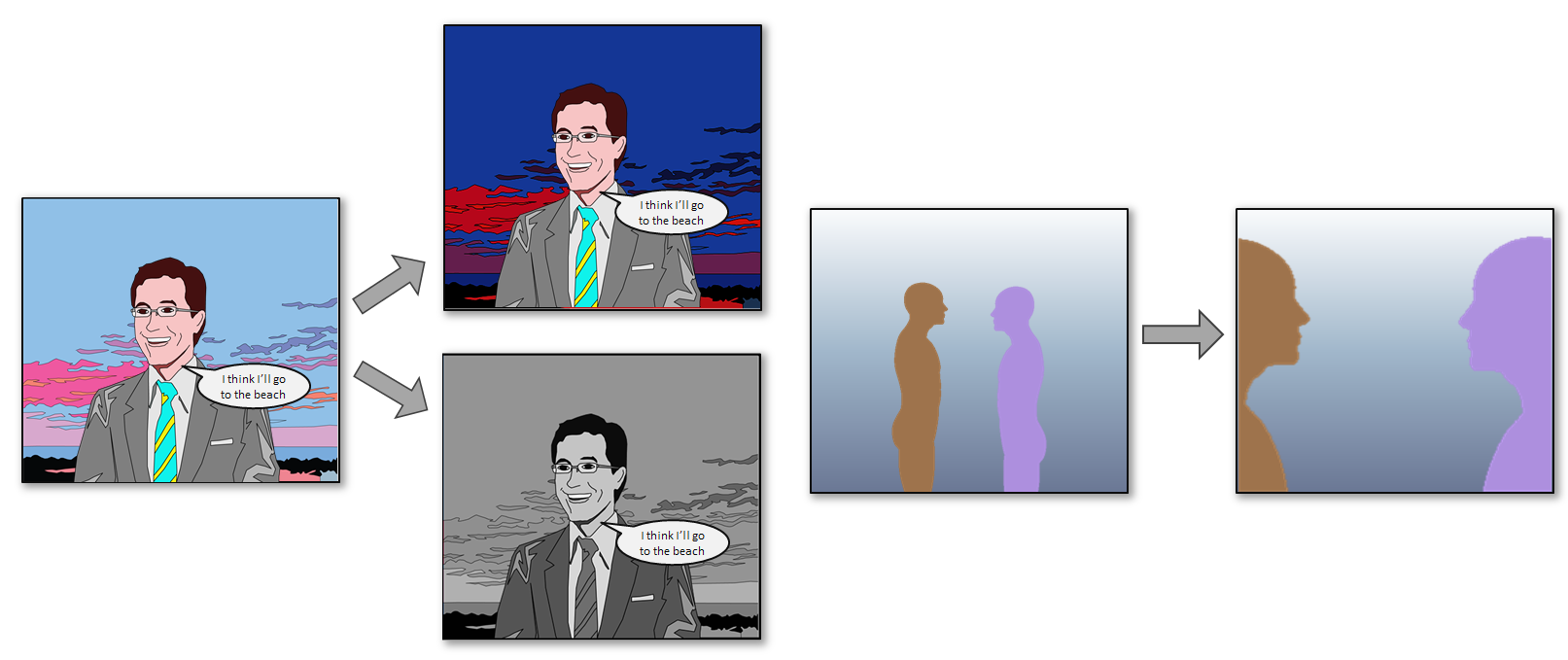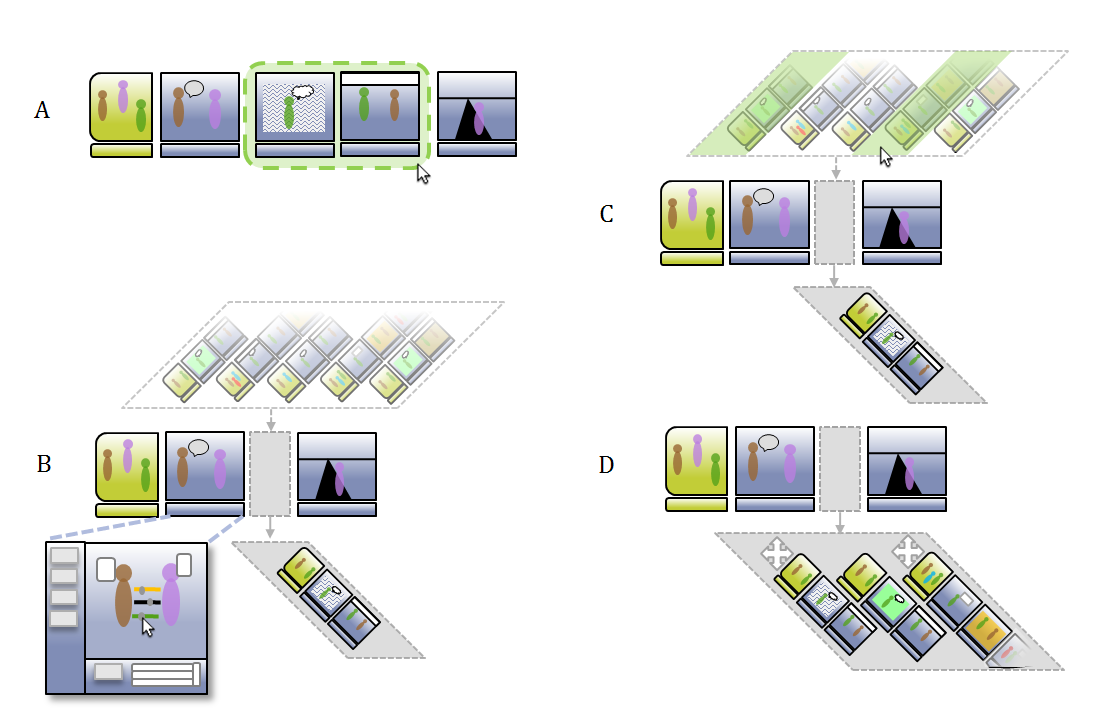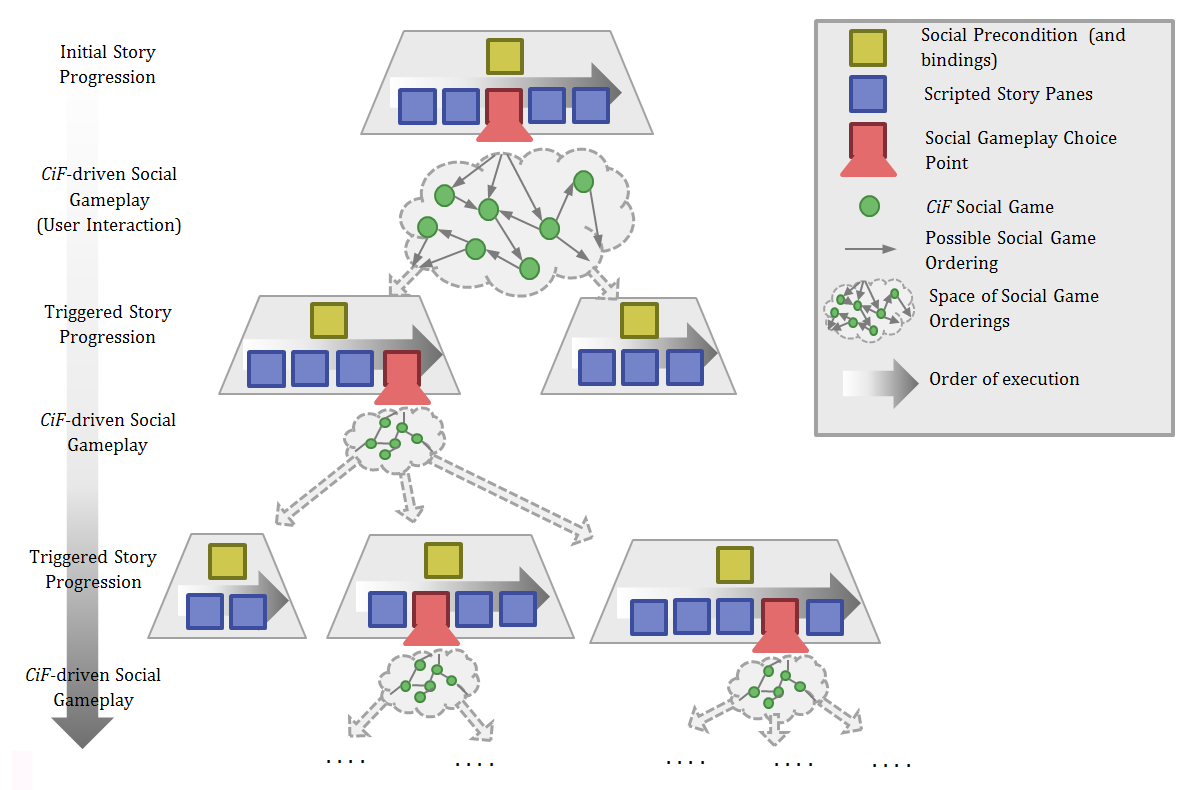Beyond Story Canvas
(Conceptual illustrations for the future of Story Canvas and beyond)
Note: These diagrams and notes are based on work presented in my PhD Advancement document located here.
Story Space Management
The hierarchy of Goals and Plot Fragments of a story created in Story Canvas can sometimes become very large and visually unwieldy. In order to concentrate on the specific authoring tasks at hand, the next version of the system will incorporate visual management of the story hierarchy through compression or collapse of Goals, as illustrated below. While manual control of this organizational feature will be included, I am also exploring the possibility of automatic collapse or compression based on the structural/content similarity of Goals or Plot Fragments. This would allow an author to easily identify and organize the space without having to manually choose what to hide or show in the interface.
Passive Story Space Exploration
Any large and highly dynamic story authored in Story Canvas will contain a large story hierarchy (composed of Goals and their associated Plot Fragments), and many complex preconditions within each of those Plot Fragments. To get a mental grasp of the intricate interactions between all of these elements, the next versions of Story Canvas will incorporate a passive story space analyzer, that will automatically generate and analyze your partially-completed story as you use the interface. This process will occur in the background, and generate a heatmap of the story space (shown below), revealing areas that are mostly unused or even unreachable. Effectively, this process is a form of run-time code analysis for Story Canvas which samples the generated story space at a Plot Fragment level of granularity.
Visual Storyboard Pane Modifiers
In Story Canvas, Plot Fragments are pieces of a story that have a precondition and set of actions to perform. These preconditions analyze the state of the story world (characters, environments, and other story information), and then modify internal information within the story (invisible to the reader), or select images and generate text within a comic-style storyboard (visibile to the reader). The below illustration shows an additional visible effect for future versions of Story Canvas. Using existing preconditions, the system will allow actions that change the appearance of a story pane, in the form of composition changes (panning or zooming) or color shifts.
Author-time Story Space Exploration and Suggestion
In this illustration below, I demonstrate the process (steps A through D) of an author being assisted in turning a traditional linear story into a branching story space. In this system, an author would interact with a real-time, active planning system that examines the current story and explores the potential next steps for a partially-authored Story Canvas story.
In step A, an author creates a regular Story Canvas plot fragment (with a precondition and series of action story panes). Given this linear story fragment, the author would then select a set of story board (a piece of this linear story), and ask the planner to “delinearize” it, or turn it into multiple potential story directions.
Next, in step B, the interface would examine the selected story fragments as well as existing characters and environments and their associated traits and relationships. Given these inputs, a story planner will take information and search the space of potential story events in order to present to the author a set of new potential story fragments (displayed above the main story board) with “interesting” interactions and story events. This planner would been previously given a corpus of story knowledge in the form of rules of interaction, or “social games”, and a heuristic for compelling story structure (rising tension, conflict, denouement, etc) in order to intelligently suggest the next stages of a story.
Continuing in step B, the author would explore the space of potential story fragments presented by the planner by altering existing character traits and relationships (shown in window below the story board), or previous plot fragments, until a desirable set of potential story fragments are achieved.
In step C, the author selects one or more of these potential story fragments, which (in step D), are transformed into a branching point in the story. From here, an author could modify the system-suggested story fragments to his or her liking, create new story fragments, or again query the planner for more potential fragments for the same or new segments of the authored storyboard.
The current progress for this work and its initial protoypes will use a planner based on the “social physics” engine (called Comme Il Faut, or CiF) implemented in the game Prom Week, created by my colleague Josh McCoy. Using this existing corpus of story rules allows us to take advantage of a working knowledge base of character interaction to bootstrap the development of this system.
Alternating Social Gameplay and Generated Storyboards
This illustration shows a Story Canvas-like authoring experience that uses the social physics of the Comme Il Faut rule system (described in the previous section) as a way to present free-form interaction for a reader in between the generated and scripted story experience of Story Canvas. In my previous work, interaction was achieved through reader-triggered “interaction goals”, presented as temporary contextual buttons appearing throughout a story as it is presented to a reader. Here, these buttons are replaced by a free form game of social interaction between characters, which ends when a desired social state is reached, resulting in a new Story Canvas-like storyboard being generated. This alternating experience of open-ended social gameplay with more structured and authored storyboards would allow for a balance of interaction and compelling authored experiences.
